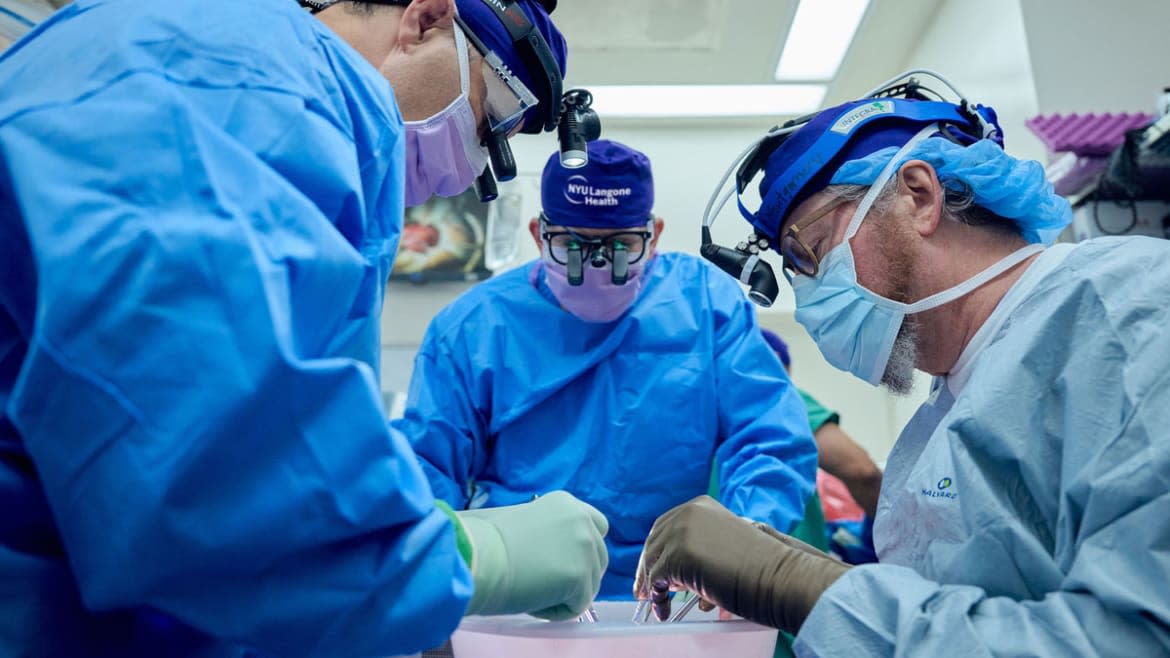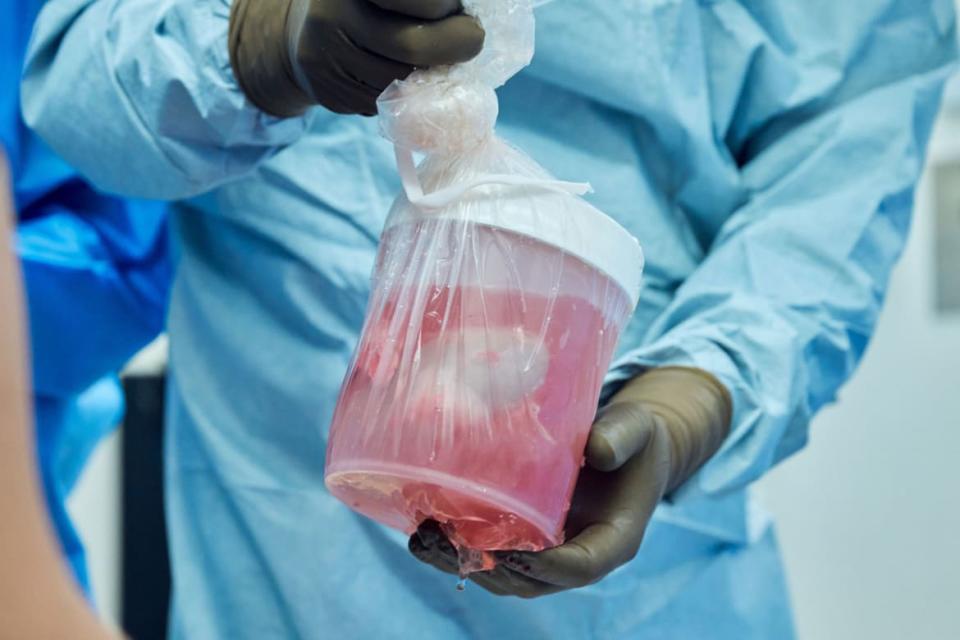A Gene-Hacked Pig Kidney Has Worked in a Brain Dead Human for a Month

A genetically engineered pig kidney transplanted into a brain dead man continues to function after 32 days—marking the longest time such a kidney has worked in a human being and another milestone in the emerging field of xenotransplantation (the transplanting of organs from one species to another).
The success of the procedure offers a lot of hope for the growing backlog of more than 103,000 U.S. patients on the organ transplant list—with the vast majority (88,000) waiting for kidneys. Potential recipients of kidneys wait an average of three to five years for a viable organ—precious time that many patients simply cannot afford depending on their condition.
The new procedure was performed on July 14, 2023 by a team of doctors at NYU Langone Health on a 57-year-old patient named Maurice Miller who passed unexpectedly following surgery to investigate a brain tumor. Miller is neurologically dead but continues to survive with a heartbeat and ventilator. The pig kidney, which was genetically modified to be accepted by the human body, has been functioning optimally since the surgery, and even produced urine soon after it was transplanted.

The pig kidney, which has the biomolecule alpha-gal removed to prevent rejection, is unpacked for transplant.
“The pig kidney appears to replace all of the important tasks that the human kidney manages,” Robert Montgomery, a professor of surgery and director at the NYU Langone Transplant Institute, told reporters Wednesday.
Montgomery also performed the first genetically-modified pig kidney transplant in September 2021 followed by another transplant in November 2021. His colleagues at NYU Langone performed two pig heart transplants the following year.
Unlike the previous kidney procedures though, which lasted no more than a few days, this most recent xenotransplantation has lasted more than a month—and doctors expect it will continue to function well for even longer.
Pig Heart Transplants for Humans Already Work Better Than Doctors Hoped
Montgomery noted that pig kidneys “required less genetic manipulation to be accepted by the human immune system than a pig heart.” To modify the organ for human transplantation, the NYU Langone team had to remove a gene that encodes a molecule called alpha-gal, which triggers the immune system response that leads to a rejection of foreign proteins from the human body. The team also embedded the pig’s thymus gland into the kidney, which they say was capable of “educating” the human immune system so it would not perceive the new organ as a threat.
Previous xenotransplantation organs have required as many as 10 genetic modifications. By contrast, the new transplantation required just a single-gene knockout in order for it to function normally in a patient—a vastly easier process.
The transplant patient’s kidneys were both removed before the pig kidney was transplanted. The kidney was monitored and—at the end of the first month—biopsied. It showed no signs of rejection and had “normal renal function in clearance of toxins,” according to Montgomery.
Scientists Brought Human Lungs Back to Life with Pig Blood
While incredibly promising, this research is still in its infancy. It’s important to note that they haven’t transplanted a gene-hacked kidney into a patient who is not brain dead yet. Many more studies and trials need to be run before we can see a large-scale roll out of xenotransplantations.
But the success of this latest procedure could provide a blueprint for making xenotransplantation easier, and potentially save thousands of lives each year.
For now, the team will continue to monitor the transplant patient for another month.
“What we’ll be able to see at the end of these two months is whether the conditions are being set up for what’s called chronic rejection,” Montgomery said. “I think we’ll have a good view into that with our biopsies and tissue we'll be able to look at at the end of two months.”
Get the Daily Beast's biggest scoops and scandals delivered right to your inbox. Sign up now.
Stay informed and gain unlimited access to the Daily Beast's unmatched reporting. Subscribe now.

